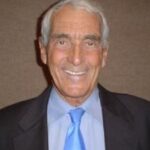On March 9, 2018, Federal District Court Judge William Alsup asked legal counsel for the parties in The People of the State of California v. BP P.L.C, et al. to present a tutorial on climate science during a five-hour hearing before the court, scheduled to take place on March 21.
Judge Alsup asked each side’s counsel to present an overview of current climate science and more specifically to answer eight questions posed by the judge. Judge Alsup also asked plaintiffs’ counsel to produce documents related to plaintiffs’ claim that ExxonMobil, BP, Chevron, and other oil companies conspired to hide evidence of an impending climate disaster.
Motivated by concern that neither party would present an objective overview of climate science, The Heartland Institute convened a team of scientists to write their own answers to the judge’s questions. Unfortunately, that effort was completed too late to submit to the judge. However, the resulting document, presented here, stands on its own as a primer on climate change for anyone looking for a sound foundation in the basic science.
In this brief memo, we offer first an overview of the current state of scientific understanding of the human impact on Earth’s climate, followed by some commentary providing context for the eight questions asked by Judge Alsup. Answers to the judge’s questions follow, and then a comment regarding his request for documentation of the claim that the oil industry conspired to mislead the public.
The Heartland Institute, publisher of this memo, helped an independent group of scientists submit their own amicus brief, which was received by the judge’s deadline. In response to that brief, plaintiffs filed a statement with Judge Alsup filled with inaccurate claims meant to discredit the amici and The Heartland Institute. The final section of this memo presents a reply by Jay Lehr to the charges made against The Heartland Institute. The qualifications of the authors of this memo appear on page 23.
Judge Alsup’s eight questions on climate science were:
1. What caused the various ice ages (including “the Little Ice Age” and prolonged cool periods) and what caused the ice to melt? When they melted by how much did sea level rise?
2. What is the molecular difference by which CO2 absorbs infrared radiation but oxygen and nitrogen do not?
3. What is the mechanism by which infrared radiation trapped by CO2 in the atmosphere is turned into heat and finds its way back to sea level?
4. Does CO2 in the atmosphere reflect any sunlight back into space such that the reflected sunlight never penetrates the atmosphere in the first place?
5. Apart from CO2, what happens to the collective heat from tailpipe exhausts, engine radiators, and all other heat from combustion of fossil fuels? How, if at all, does this collective heat contribute to warming of the atmosphere?
6. In grade school many of us were taught that humans exhale CO2 but plants absorb CO2 and return oxygen to the air (keeping the carbon for fiber). Is this still valid? If so why hasn’t plant life turned the higher levels of CO2 back into oxygen? Given the increase in human population on Earth (four billion), is human respiration a contributing factor to the buildup of CO2?
7. What are the main sources of CO2 that account for the incremental buildup of CO2 in the atmosphere?
8. What are the main sources of heat that account for the incremental rise in temperature on Earth?
NOTE: The authors of this memo are: Jay Lehr, Ph.D., Kenneth Haapala, Patrick Frank, Ph.D., and Patrick Moore, Ph.D.







